Perspectives from the Field
As part of ASHG’s yearlong 75th anniversary celebration, a team from ASHG talked with six geneticists. They came from different parts of the world and are pursuing different aspects of the field. Some are in the early stages of their career, while others are seasoned researchers who have experienced firsthand the enormous changes in genetics and genomics that have occurred over a relatively short period of time.
The geneticists brought different interests and goals to our conversations. Some are pure researchers, making use of state-of-the-art tools to understand diseases and disorders at the cellular level. Others work with patients exclusively or divide their time between clinical work and research. They all share a common passion: delving deeper into the human genome to better understand the link between genetic sequencing and clinical care.
As a starting point for our conversations, we asked the following four questions:
- What does “One Humanity, Many Genomes™” (the theme of the 75th anniversary) mean to you?
- How does your work in the field advance human genetics research?
- What do you see as the biggest contributions to the field?
- What advances do you hope to see in the field?
Their thoughts about these questions are embedded in the following profiles, which reveal how personal experiences have intertwined with professional goals and aspirations to create meaningful and productive careers.
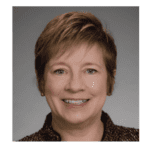
Gail Jarvik, MD, PhD, the Arno G. Motulsky Endowed Chair in Medicine, Joint Professor of Medicine and Genome Sciences, and Head of the Division of Medical Genetics (only the third since the founding of the division in 1957), an Adjunct Professor of Epidemiology at the UW Medical Center (UWMC) and an Affiliate Member of the Fred Hutchinson Cancer Research Center. 2021 ASHG President.
As long ago as junior high school, Dr. Jarvik knew she wanted to go to medical school to study genetics. In part, she was inspired by the physical differences in her own family. She wondered why she and some of her siblings had straight hair, while others had curly hair. From this basic question, Dr. Jarvik has gone on to ask increasing complex ones, becoming part of the 21st century revolution in genetics.
In the early days, researchers were excited that they could link a single gene to diseases; Huntington’s disease, a progressive brain disease that robs patients of their ability to function, was one of the early ones. From there, geneticists sequenced diseases, with cystic fibrosis being the first. Since then, the human genome has been sequenced, opening the doors to understanding risk factors for diseases based on genetic profiles, which are stored in large databases open to the scientific community.
While Dr. Jarvik celebrates these milestones, she thinks the databases are missing genomic sequences from underrepresented people around the world. That’s why she has taken a leadership role in the National Institutes of Health All of Us project, which aims to add diversity to available genomic sequences. In 2022, the project announced that 100,000 highly diverse genome sequences have been completed, with 50% from racial or ethnic groups that have been historically underrepresented.
“The project has also shown that by engaging with the community to gain trust, more people are willing to enroll and become part of this scientific endeavor,” says Dr. Jarvik. “With greater diversity in the database, the resource will become indispensable for health-related research.” [NIH’s All of Us Research Program Releases First Genomic Dataset of Nearly 100,000 Whole Genome Sequences | All of Us Research Program | NIH]
Another project, called genome-wide association studies (GWAS), is making use of an established database called the eMERGE consortium. This database contains records of people with a range of diseases and conditions, including colorectal cancer, susceptibility to infection, metabolic disorders, and carotid artery disease. With GWAS studies, researchers are looking at the impact of small genetic variations on the genome. From this information, researchers hope to learn about the underlying causes of these conditions.
Moving forward, Dr. Jarvik hopes to see more genetic knowledge translated into treatments for common diseases, such as heart disease and cancer. “As we gain a better understanding of how genes interact with the environment and with each other, it will become possible to improve prevention measures and treatment,” she adds. “Collecting data gene by gene from large numbers of people could significantly change the health care landscape.”
“I celebrate the importance of diversity in humanity. Everyone has a different genome, but we are all tied together as one group of species. There are differences in genomes but not in humanity.”
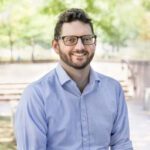
Benjamin Neale, PhD, Co-director of the Program in Medical and Population Genetics at the Broad Institute and Director of Genetics at the Institute’s Stanley Center for Psychiatric Research.
Dr. Neale came of age with technology, and he sees analytical and computational tools as the most effective way to analyze large datasets. What’s more, he’s a fan of biobanks, which he thinks “will slowly but surely transform how we think about human health, what environmental exposures matter, and what treatments may be possible.”
The focus of Dr. Neale’s research is severe mental illnesses, particularly schizophrenia, bipolar disorder, and attention deficit hyperactivity disorder. “We are very far away from understanding the cellular and physiological processes underlying these disorders,” he says. “As a result, there is uncertainty about what treatments will work and what medications are the more effective. These diseases are complicated and challenging to study from a genetics perspective, but this work may shed light on what variants increase an individual’s risk of developing one of these disorders.”
To this end, Dr. Neale and his team conducted an analysis for the Schizophrenia Exome Sequencing Meta-Analysis consortium. They found variants in 10 genes that have a significant impact on a carrier’s risk of developing schizophrenia. He also has analyzed data from the first ADHD GWAS study. He believes sharing data from large datasets is the wave of the future, the best way to build scientific knowledge and to address such pressing issues as the relationship between genetic and phenotype variation and how to measure genetic differences.
“It is my passion to figure out the underlying causes of schizophrenia and bipolar disorder and to help develop better treatments,” Dr. Neale says. “The medicine cabinet has not changed much in decades.”
“We share much of our DNA, but many small differences have big consequences, causing people a great deal of suffering. Genetics presents a new way to look at the world and an opportunity to improve the quality of life for individuals with complex disorders.”
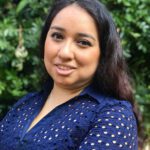
Claudia Gonzaga-Jauregui, PhD, Principal Investigator, International Laboratory for Human Genome Research, LIIGH, UNAM. Founder Red Mexicana de Enfermedades Raras (ReMexER)
Dr. Gonzaga-Jauregui was in high school when the Human Genome Project was completed, and even back then, she suspected that genetics would have a tremendous impact on human health. As a PhD student at Baylor College of Medicine in Houston, Texas, she was part of the team that conducted one of the first whole genome analyses, opening the doors to understanding the link between genetic variations and disease.
After completing her graduate studies, Dr. Gonzaga-Jauregui returned to Mexico determined to bring her experience and knowledge to Latin America. “Our goal is to bridge the gap between a rare disease and its genetic cause,” Dr. Gonzaga-Jauregui explains. “We’re focusing on Mendelian disorders, those caused by mutations in single genes, and using genomic and exome sequencing to provide a diagnosis and characterize genetic variation in Latin America.”
The biggest barrier to moving forward with the project is cost. “To complete genomic sequencing, the samples have to be sent out to either the United States or Germany, which is expensive and burdensome,” Dr. Gonzaga-Jauregui says. “For that reason, we’re looking for partners and collaborators.” Even with this obstacle, Dr. Gonzaga-Jauregui and her team at the University of Mexico have sequenced the genomes of 15 families and are planning to sequence another 15 sets. The hope is to better understand the molecular architecture of rare diseases that run in families.
Over the long term, Dr. Gonzaga-Jauregui would like to see biotechnology companies bring sequencing technologies to other parts of the world to achieve equity in the makeup of genomic databases. Furthermore, much work still needs to be done to educate people about why this work is important. “Many people don’t know what a risk or a susceptibility is,” she adds. “These issues play a role in the onset of disease, and we now know that they are also influenced by environmental factors and lifestyle. We have a moral responsibility to bring this knowledge to people across the globe.”
“Although every person is unique, we are all part of the same species and share genetic features. In a time of political divisiveness, it is important to remember that we are all linked together and need to take care of each other and live successfully with one another.”
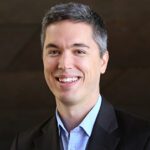
Stephen B. Montgomery, PhD, Associate Professor of Pathology, of Genetics, of Biomedical Data Science and, by courtesy, of Computer Science
Scientists have long known that before genetic variations manifest themselves as diseases, they are already active at the molecular level. What is the nature of this activity? What impact do variants have on gene functioning?
To gain insights into these questions, Dr. Montgomery is one of several investigators analyzing information in the Genotype-Tissue Expression (GTEx) Dataset. The dataset includes tissues from 800 people who have died. Specifically, Dr. Montgomery’s lab investigated expression levels of different variants throughout the body. For example, when looking at the variant associated with obesity, Dr. Montgomery’s team questioned whether the variant was impacting expression of adipose cells in the body or the hypothalamus in the brain. They also investigated whether the variant affected the pancreas and how insulin is secreted.
“As we uncovered where in the genome the variation was, we developed a map of these variant effects,” Dr. Montgomery explains. “Other researchers can now use this resource to dig deeper into the relationship between variants, gene functioning, and the onset of disease. There is also a pediatric component to this project, where we’re looking at how gene expression changes during different developmental stages.”
Recently, Dr. Montgomery has switched gears and is looking at rare, undiagnosed diseases by making use of a large database called GREGoR, or Genomics Research to Elucidate the Genetics of Rare Diseases. Using samples from clinical geneticists across the San Francisco Bay area, Dr. Montgomery and his team are developing computational approaches to help them identify the disease.
“We’re throwing the kitchen sink at these individuals, hoping to be able to diagnose their diseases,” Dr. Montgomery says. “In the process, we’re looking for the right tools and technologies to facilitate that diagnosis.”
“We are one group of people, sharing the same experiences and being exposed to changes in climate, technology, and health. Although our unique genomes help define who we are, we share so much genetic information that we can’t lose sight of how much we are alike.”
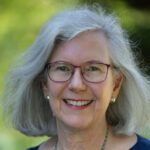
Michele Ramsay, PhD, Professor, Division of Human Genetics, National Health Laboratory, University of the Witwatersand, Johannesburg, South Africa
Dr. Ramsay has spent most of her life in South Africa, and what she loves the most about her country is the diversity. Therefore, it’s no surprise that she’s devoted her life to studying that diversity at the genetic level and pushing for more sequencing across the continent.
“I’m particularly interested in understanding susceptibility to diseases such as diabetes, as well as obesity and stroke,” she says. “To realize this goal, it’s also important to understand the gene environment in the broadest sense, which includes climate, diet, and exposure to alcohol and smoking.” Her work has shown that the link between genetic variants and health outcomes isn’t always straightforward. “Based on the data collected from all over the world, we’ve noted that a variant may cause one outcome, like high cholesterol, in one person and low cholesterol in another, depending on the environment,” Dr. Ramsay notes. “These links aren’t always black and white, making it important to be careful how data is interpreted.”
Dr. Ramsay feels fortunate that she has been able to see the full spectrum of progress in genetics, beginning before scientists knew how to manipulate DNA through the mapping of the human genome to having new technologies available to identify mutations. She points out that it took us 30 years to find the mutation for a common skin disease in South Africa that researchers knew was located on chromosome 8. “It was a long journey getting there, but we’re pleased that we now know the cause and can treat the disease more effectively,” she says.
Looking ahead, Dr. Ramsay believes that it’s crucial that more understudied populations from diverse groups be added to worldwide databases. Doing so, however, raises new questions. With a larger, more diverse databases, the ethics of how to describe people needs to be considered thoughtfully. She’s also concerned about possible negative outcomes from the ability to manipulate genes; it’s possible that it could be done in such a way to cause harm. Therefore, it’s imperative that regulatory processes cut across boundaries while also not restricting data sharing.
“Respecting the privacy of individuals and protecting the data from bad actors while sharing data must be done simultaneously,” Dr. Ramsay says. “Although some issues still need to be resolved, it’s possible to put in place systems that promote fair data sharing.”
“Each of us is unique, and the differences among us are small. We haven’t even begun to scratch the surface of the world’s diversity, which is really what genetics and genomics are all about.”
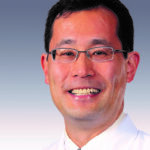
Joseph J. (Joe) Shen, MD, PhD, Associate Professor, UC Davis Health
These days, Dr. Shen wears two hats. Though mostly a pediatric clinical geneticist, he has recently taken on a small research project: to learn more about a rare disease caused by a poorly understood gene. This gene predominantly affects boys and causes seizures and developmental delays. Dr. Shen first observed this condition about 15 years. At the time, he reached out to other investigators, but there was little research available. “I decided to give the project a shot,” Dr. Shen says. “We’ve set up collaborations with more experienced researchers and have created a mouse model with the disease. We’ve taken a leap of faith and are very enthusiastic about the project.”
The team is also collecting biological samples and using stem cells to grow neurological cells in the lab. This part of the project is striving to understand what is unique about this gene mutation.
One problem facing both clinical and research geneticists in pediatrics is that while diagnosing genetic diseases has become easier, there have been few cures. One exception, however, is gene therapy for some diseases, such as muscular dystrophy.
“We are chipping away at treatment options, which often involve working with multiple specialists to manage different aspects of the disease,” Dr. Shen says. “At the same time, more data is being collected, with increasingly sophisticated tools available to analyze it. As we continue to work on both fronts, I believe that cures will become more possible.”
“In this particular social and political climate, it’s good to see ourselves as both an individual and as part of a group. On an individual level, we all have our culture, our families, and our friends. But from a scientific and genetics standpoint, across time and history, we are all human beings and make up one humanity.”
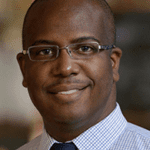 Neil Hanchard, MBBS, DPhil, Senior Investigator, Center for Precision Health Research, National Human Genome Research Institute, National Institutes of Health
Neil Hanchard, MBBS, DPhil, Senior Investigator, Center for Precision Health Research, National Human Genome Research Institute, National Institutes of Health
Dr. Hanchard describes his entrée into genetics research as “pure serendipity.” After receiving his medical degree in Jamaica, he was awarded the Jamaica Rhodes Scholarship to the University of Oxford in the United Kingdom. While studying there, Dr. Hanchard discovered his passion for the field.
“I found genetics fascinating,” Dr. Hanchard recalls. “I focused on rare disorders in pediatrics, and I wanted to figure out why some children developed these diseases and what can be done about it. It was all very logical. I was optimistic that we could leverage technological advances and ultimately develop therapeutics.”
Genetics has paved the way for his career ever since. After returning to Jamaica, he studied sickle cell disease and severe childhood malnutrition. He then went to the Mayo Clinic in Rochester, Minnesota, for his residency, followed by a medical genetics fellowship at Baylor College of Medicine in Houston, Texas. His time at Baylor solidified his interest in uncovering new genes linked to rare diseases among underrepresented populations.
“By looking at diseases through a genetic lens, we’ve gained insight into what causes them,” he says. “I’m particularly interested in diseases that have been around a long time but whose physiology still eludes us.”
His work with sickle cell disease is a case in point. Physicians and scientists had long noticed that some patients were at increased risk of producing antibodies following lifesaving transfusions. A few years ago, his team discovered two genes on chromosome 5 that turn genes on and off. Mutations in these genes appear to play a role in causing some people to produce antibodies. Furthermore, the mutations only appear in people of African ancestry. Work is ongoing to learn more about these discoveries.
This example also illustrates the importance of population genetics to Dr. Hanchard’s work. Focusing on a specific population and discovering variants within that population leads to further genotyping to find out whether the variation is common or rare. Similarly, as more populations are studied, the greater the insights that will emerge.
“By sequencing and genotyping as many underrepresented populations as possible, we increase the chances of discovering new genes, as well as their underlying mechanisms,” Dr. Hanchard adds. “As we work out the finer details, we can then get back to patients, perhaps with new ideas about how to treat them. That, of course, is the ultimate goal.”
“I think of humans as having a shared experience and a shared ancestry. While most of the genome is the same, the portions that are different drive the richness of humanity.”
